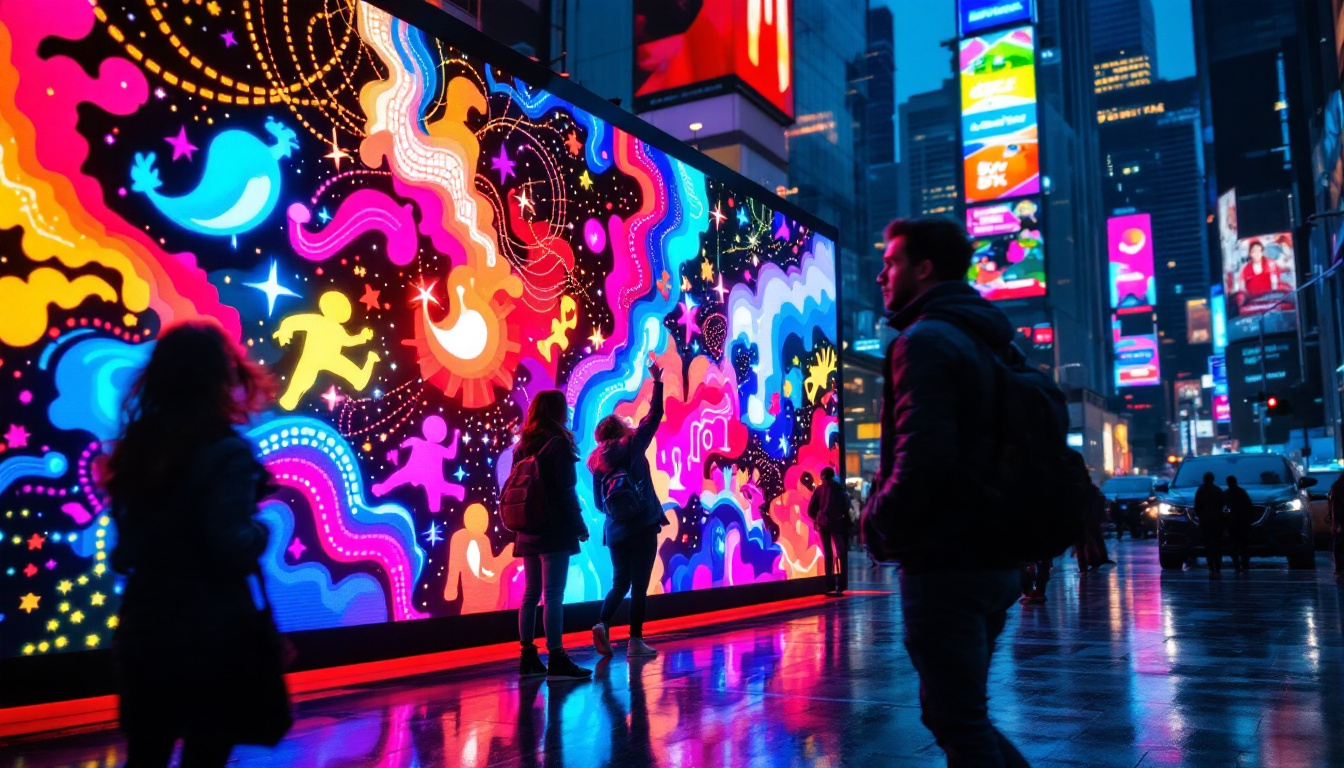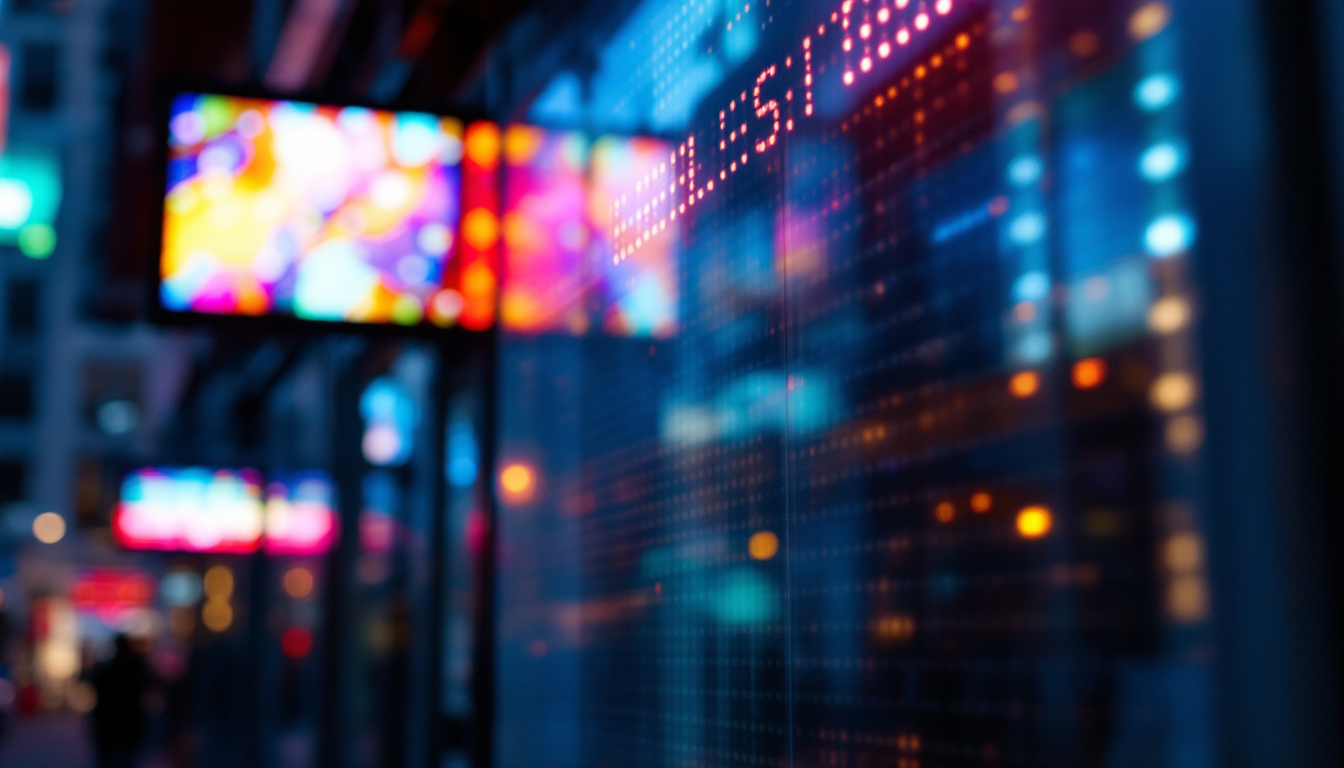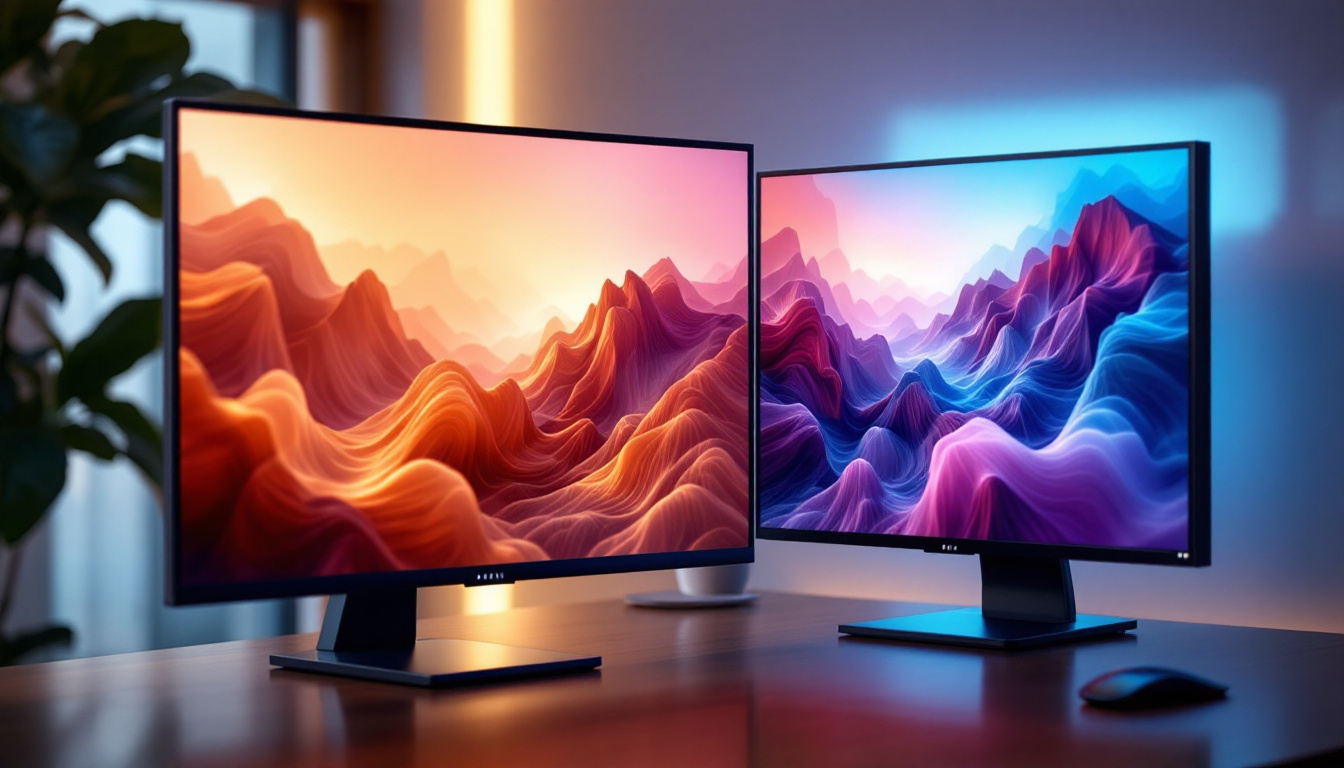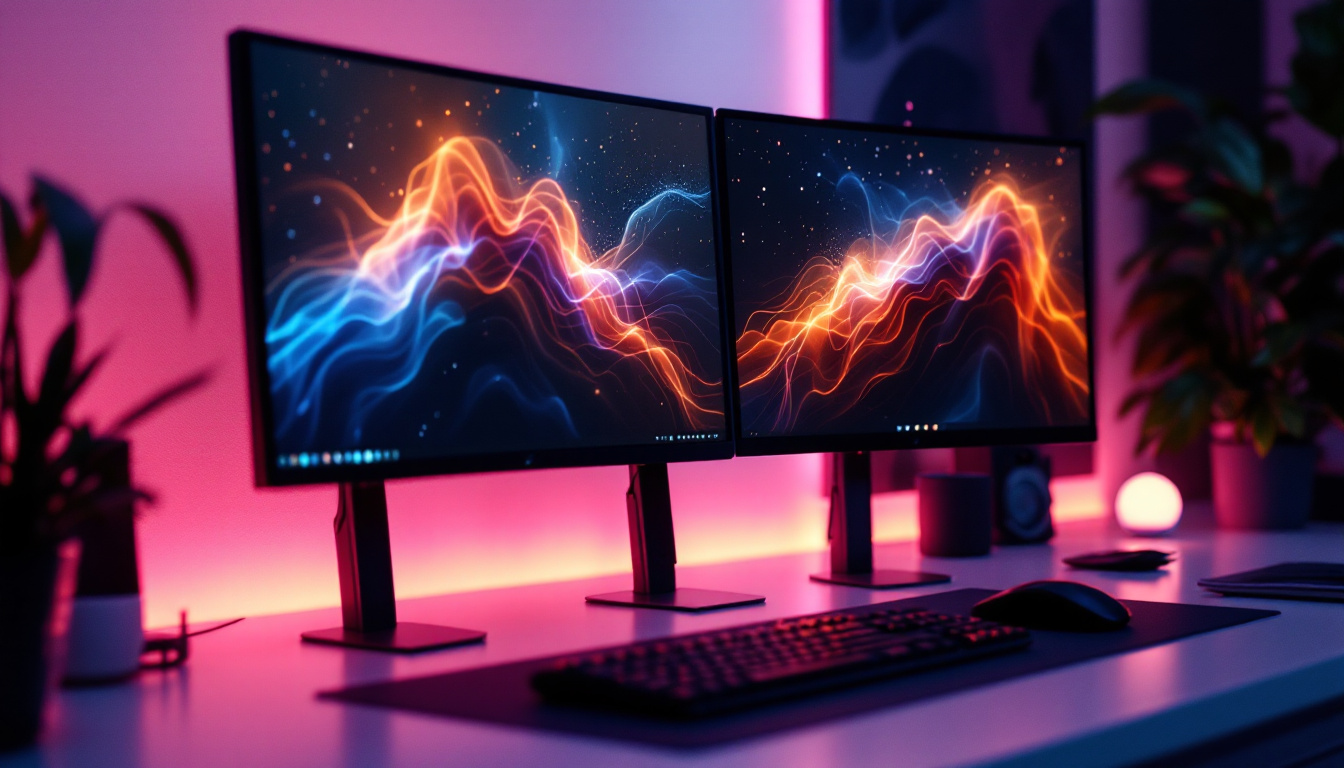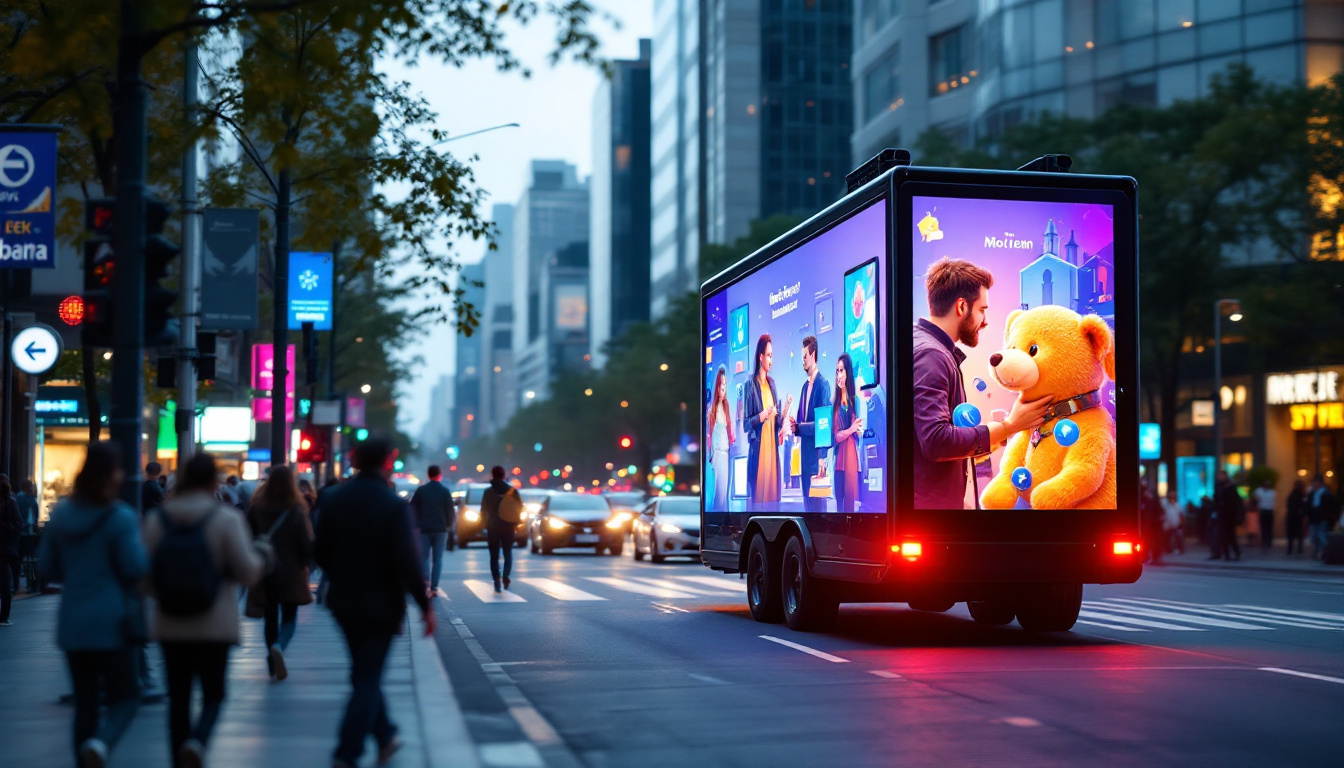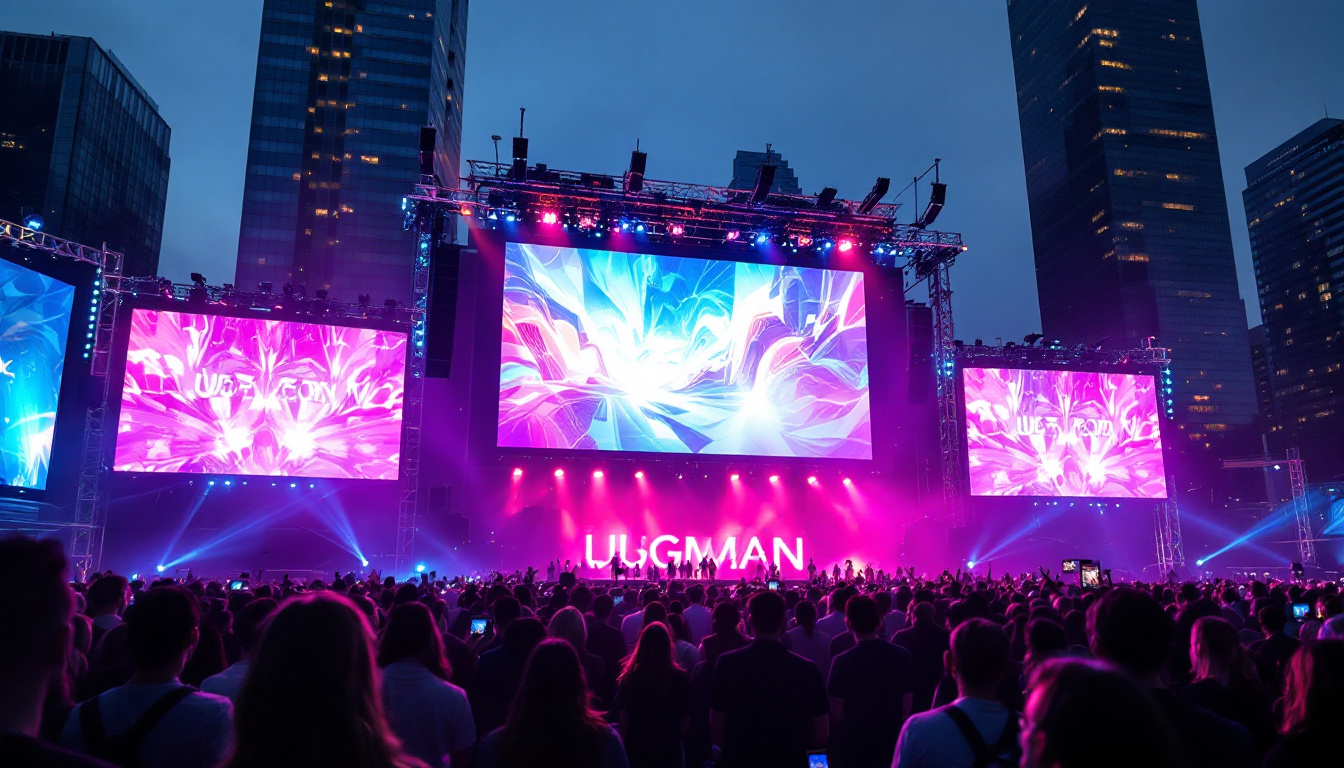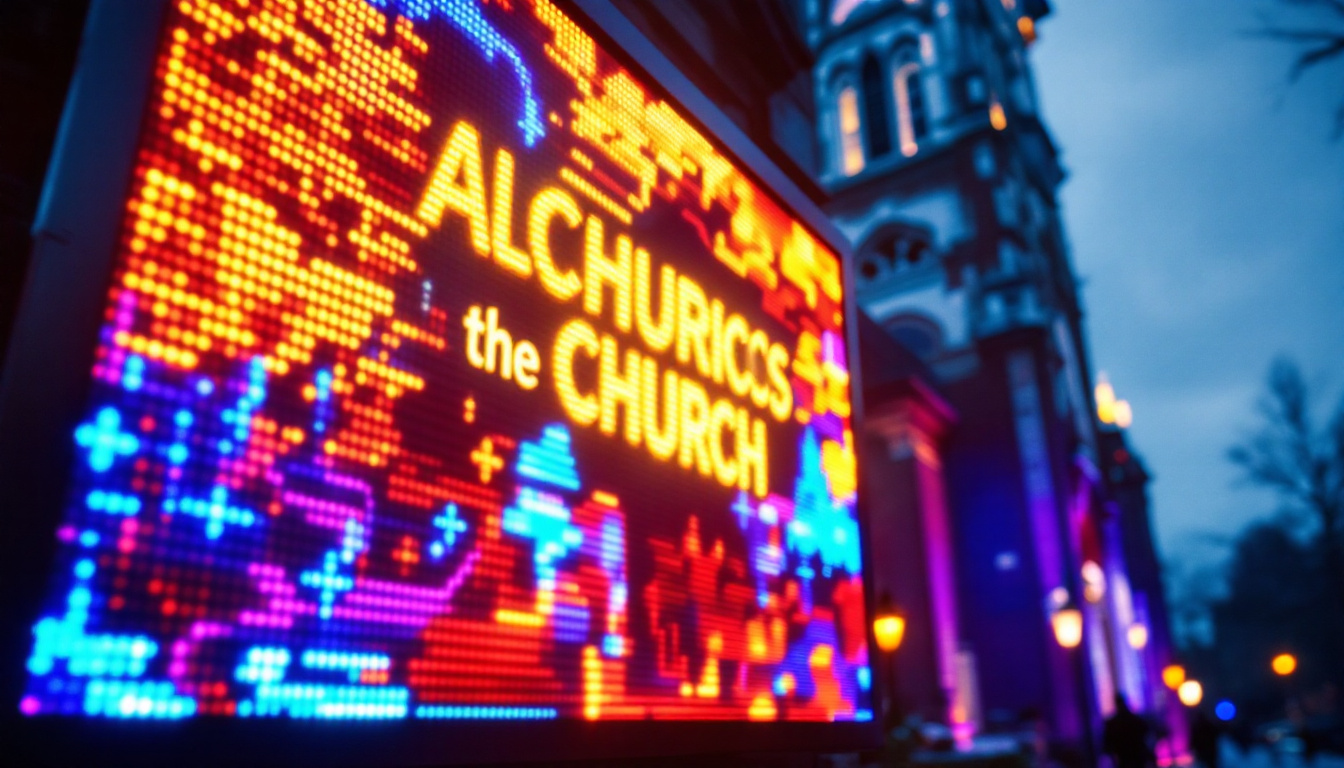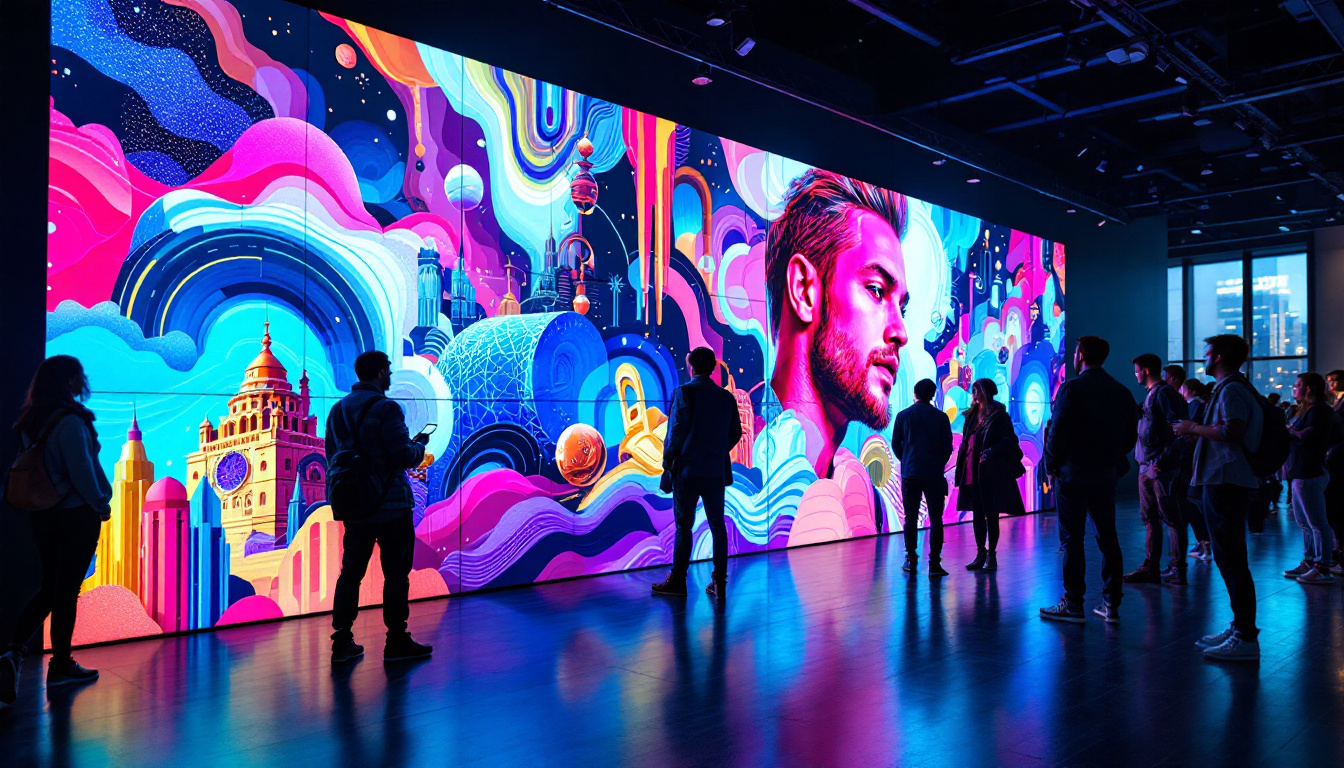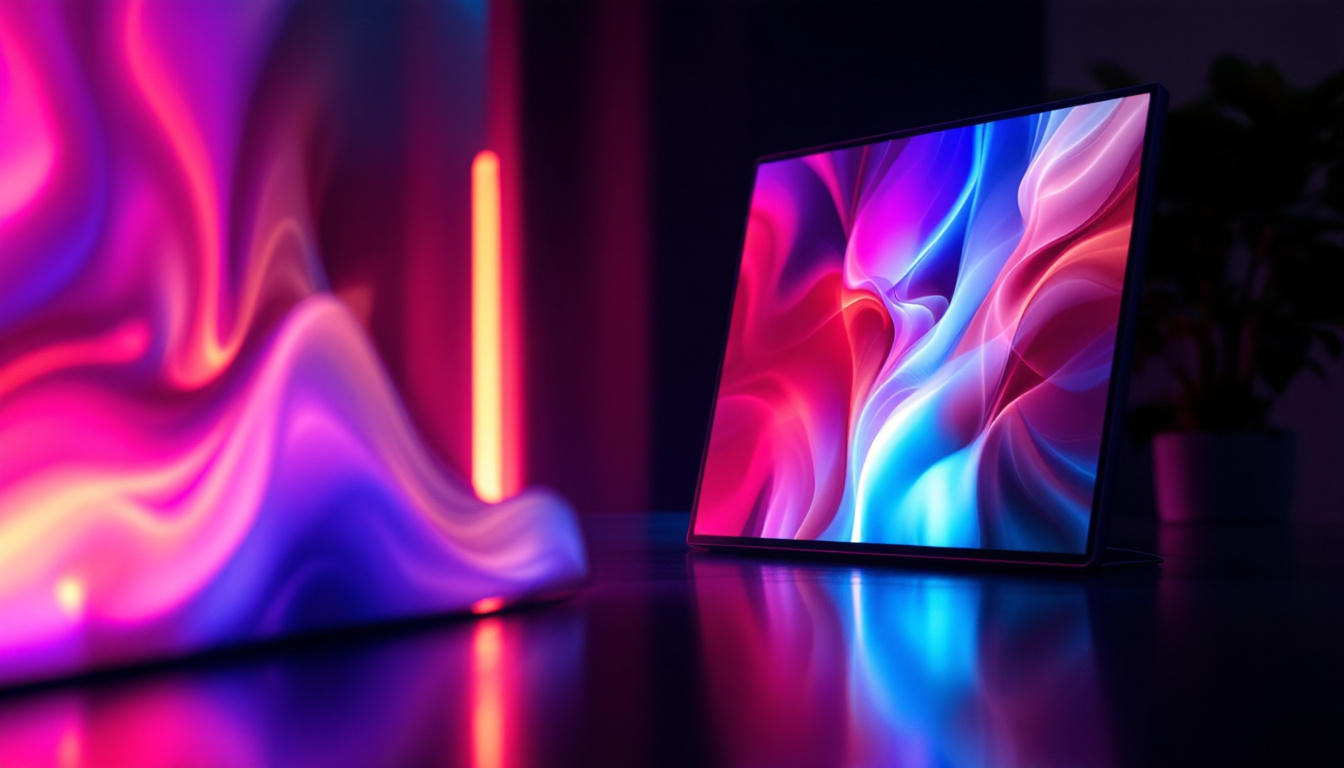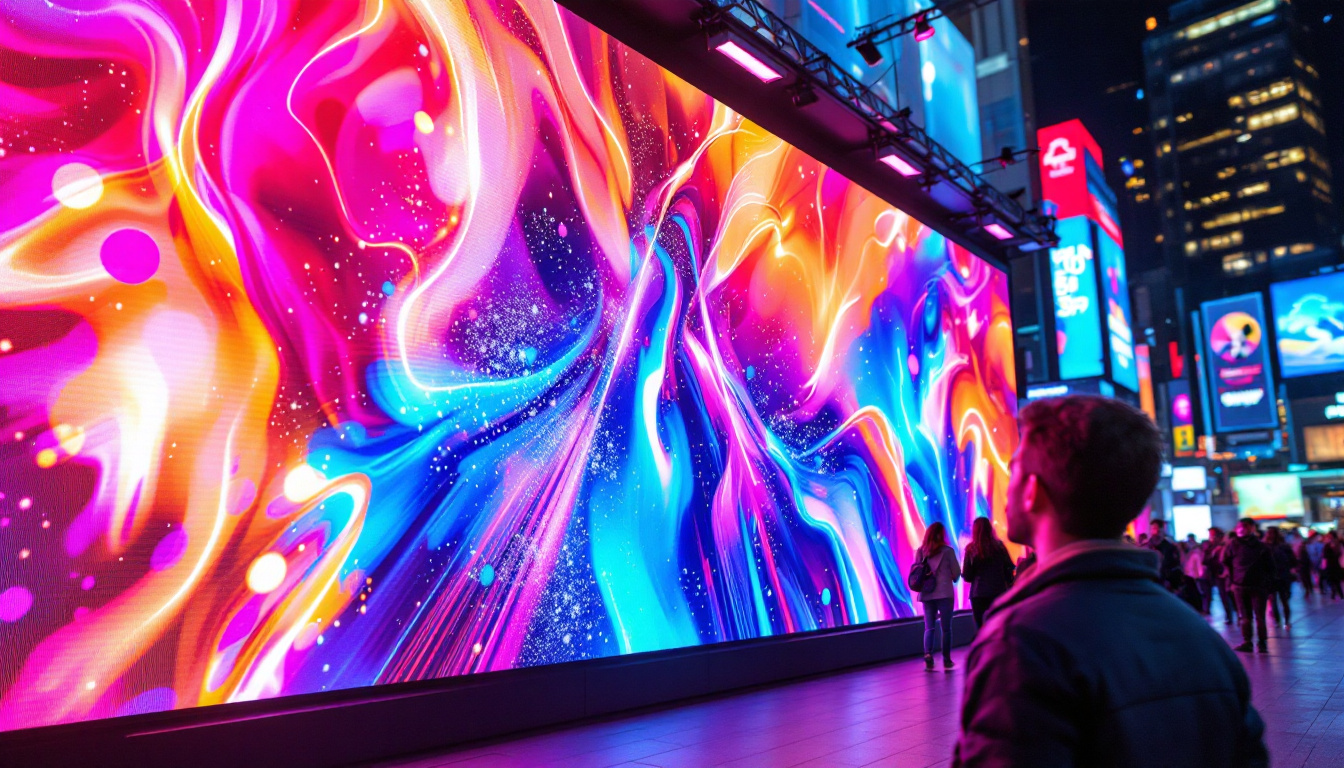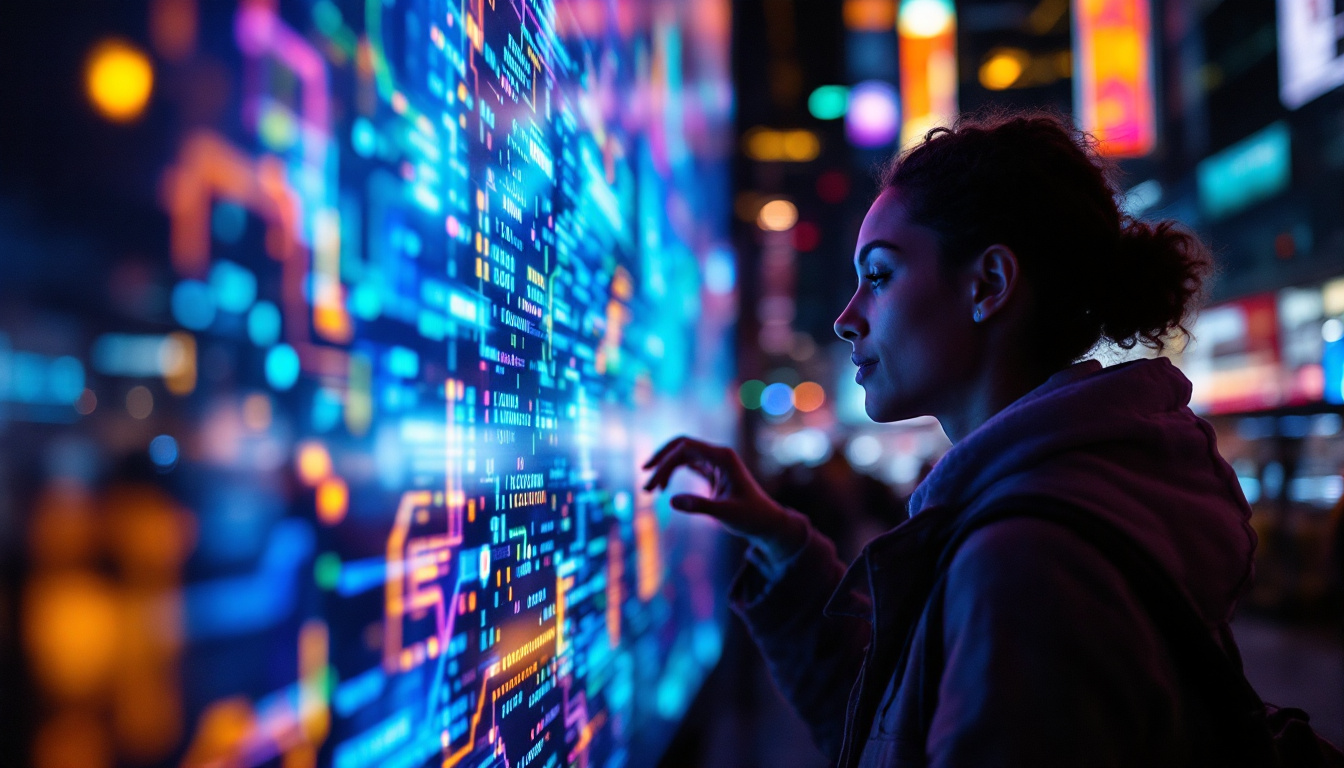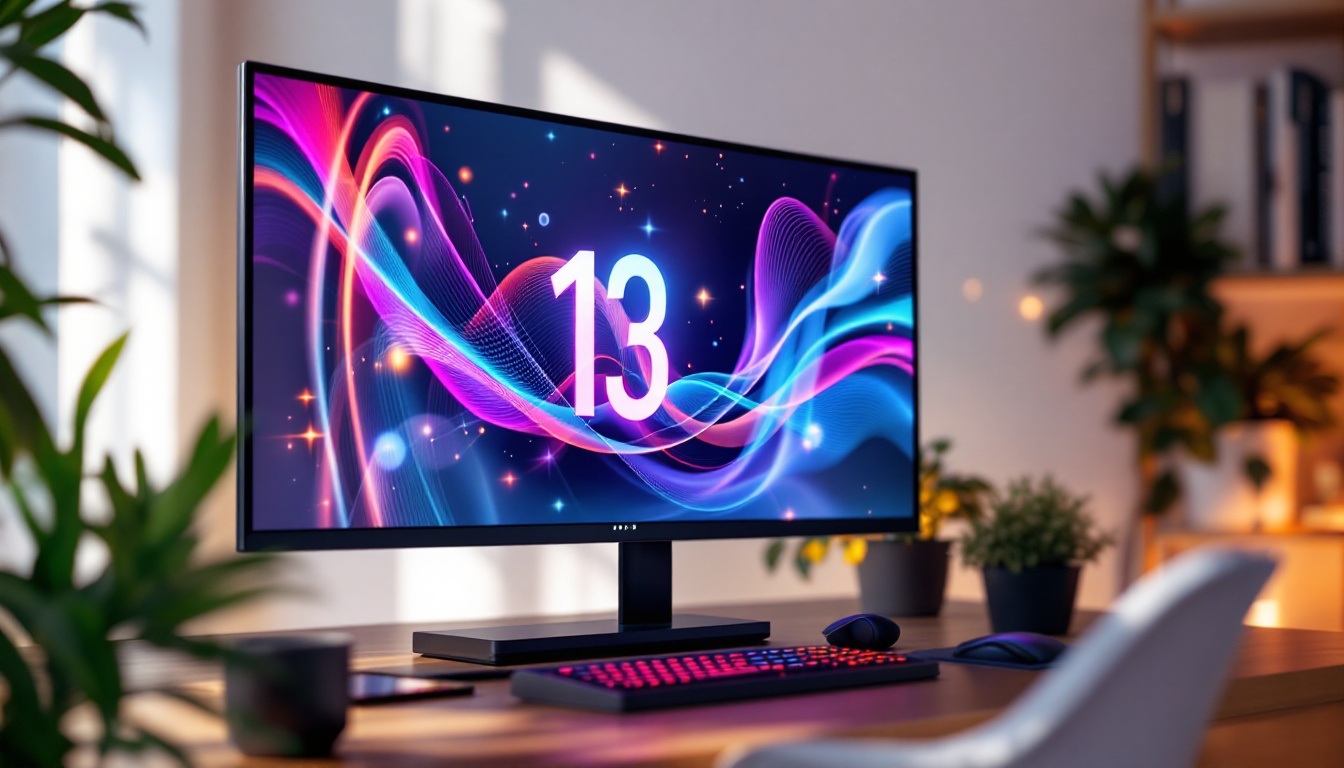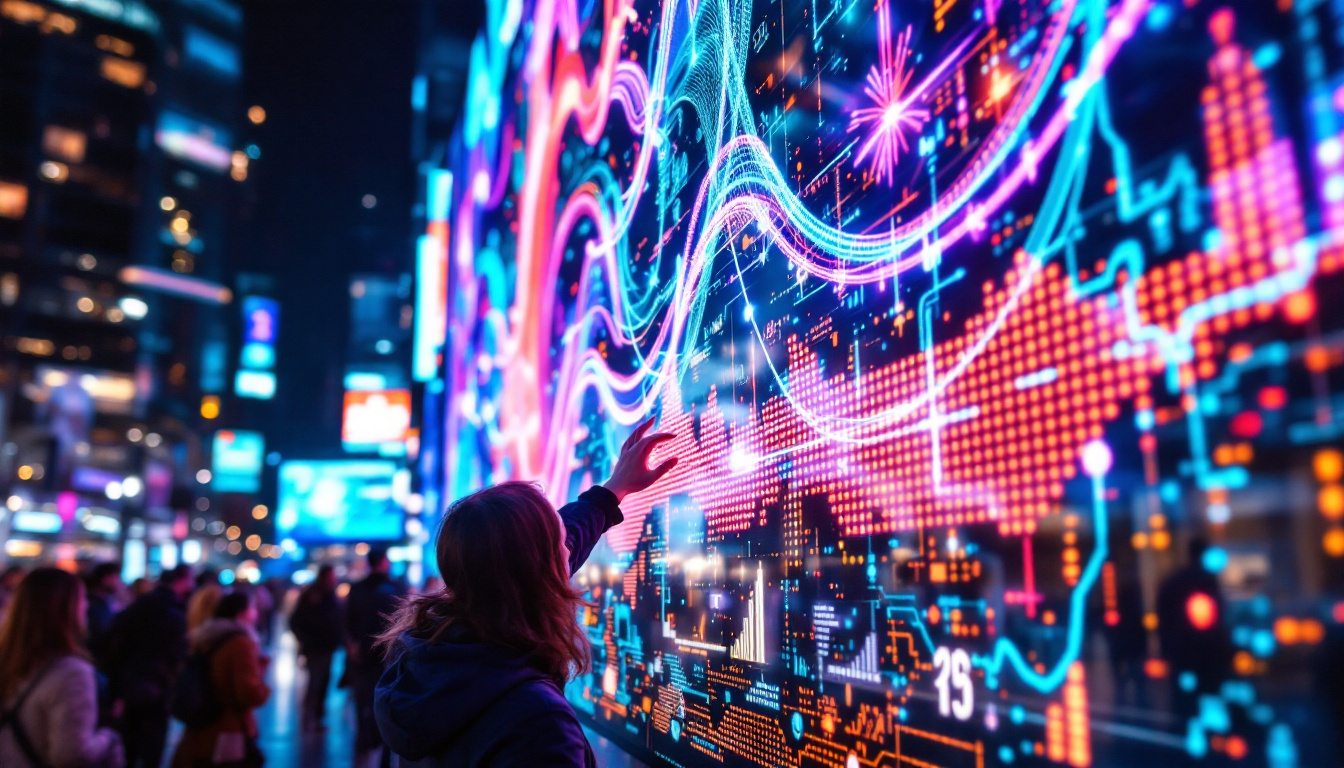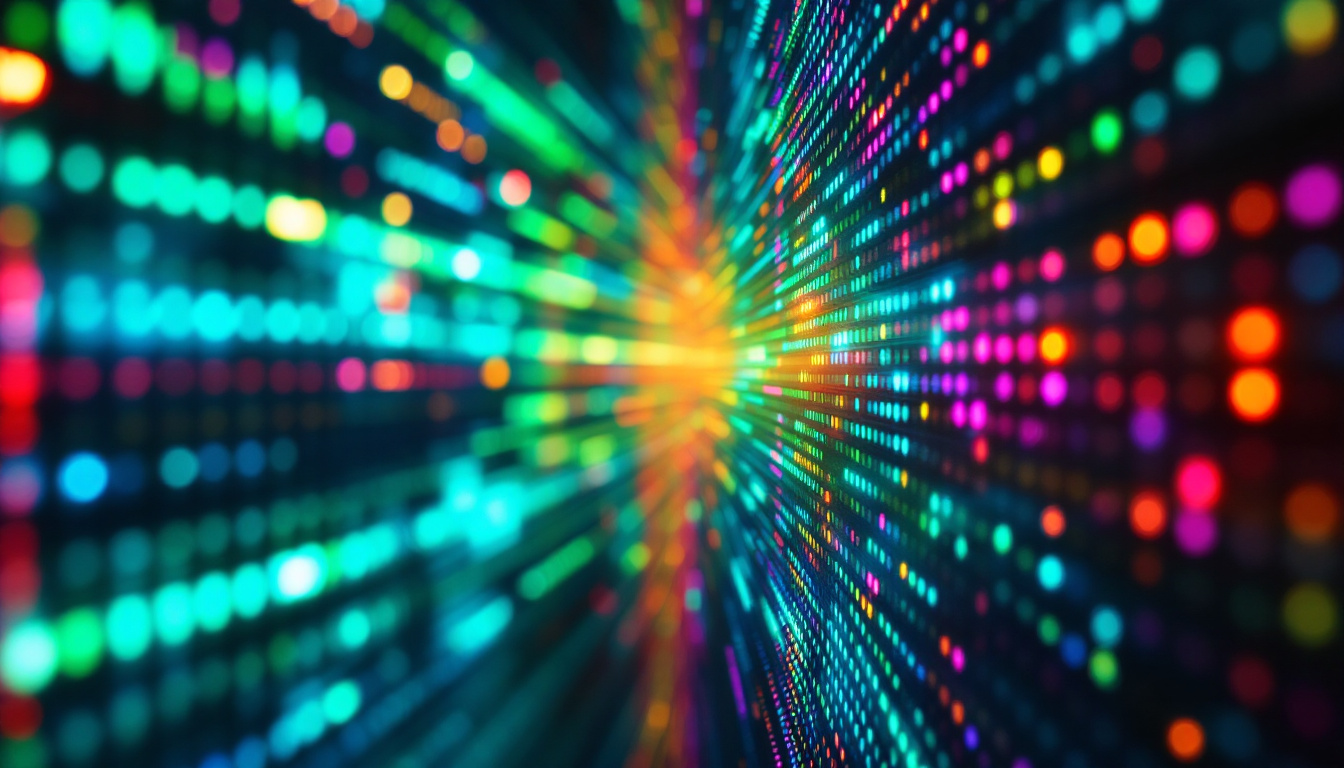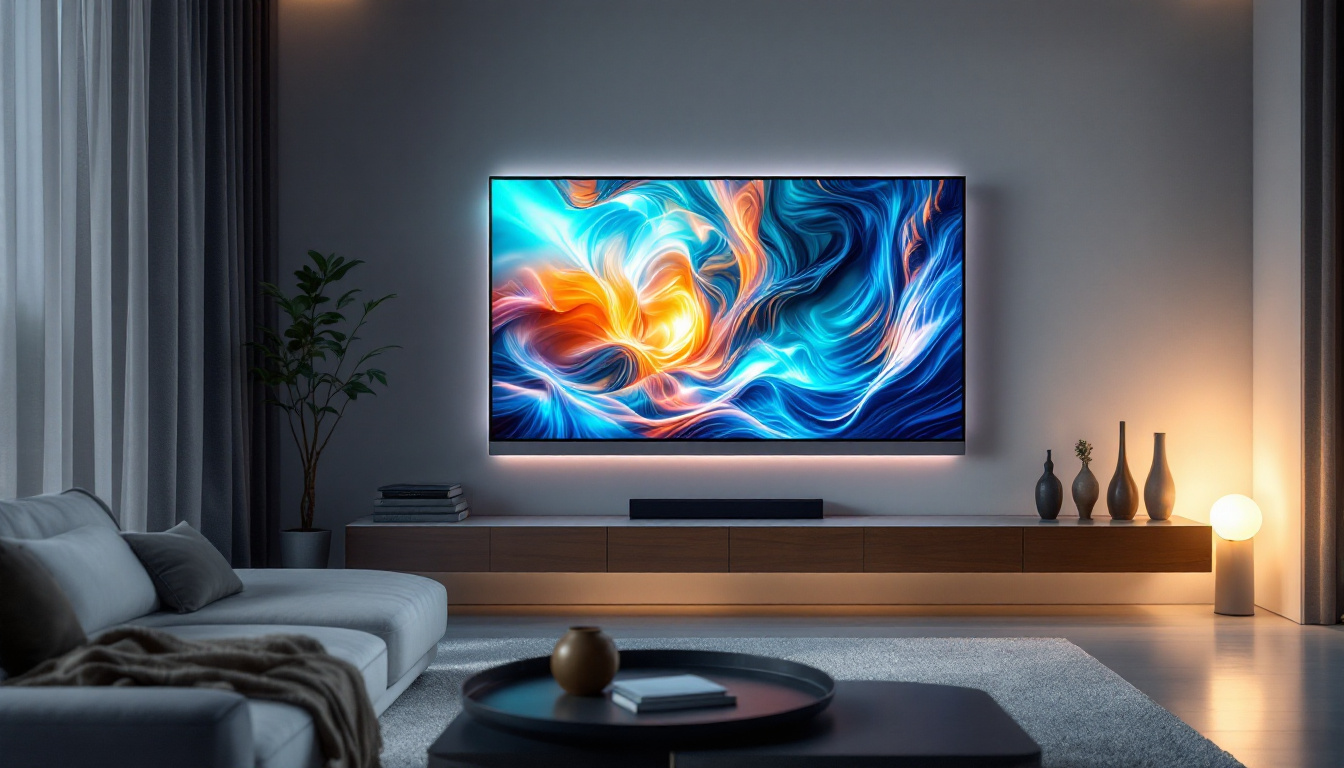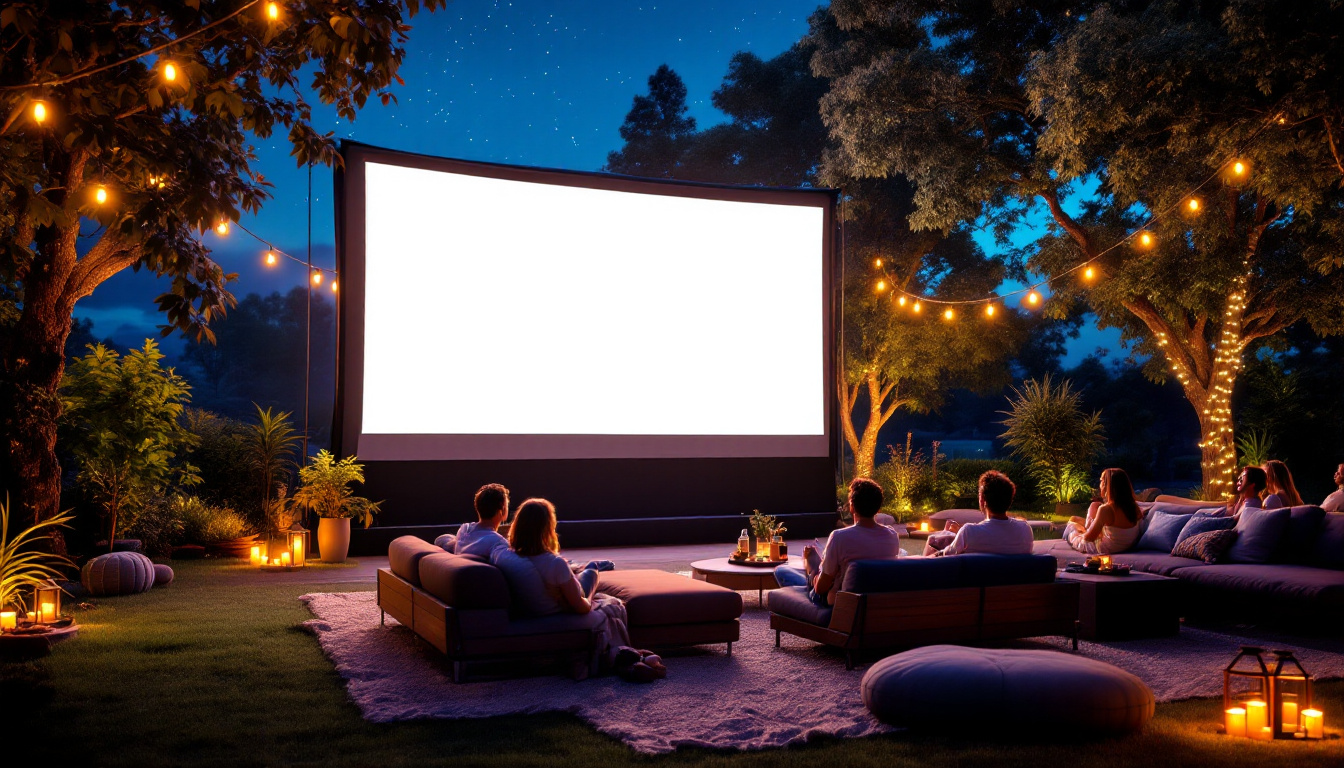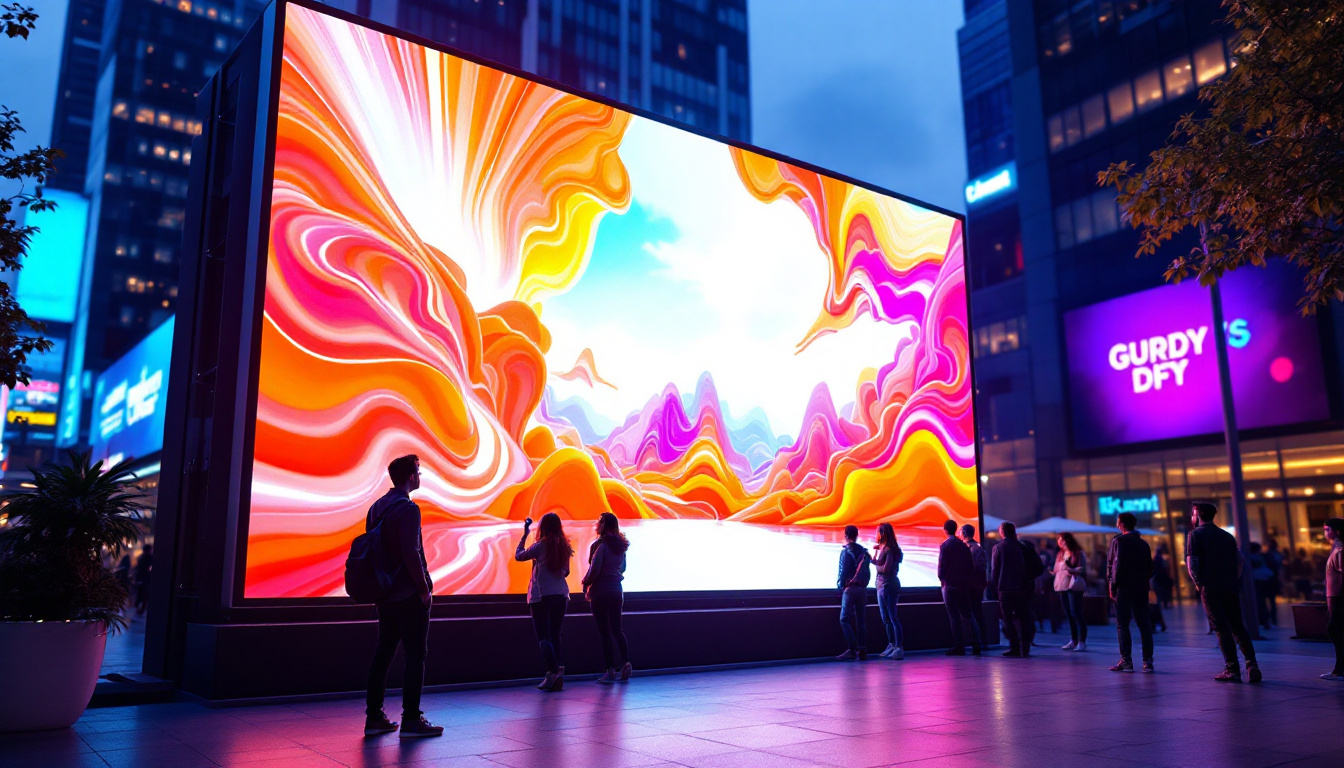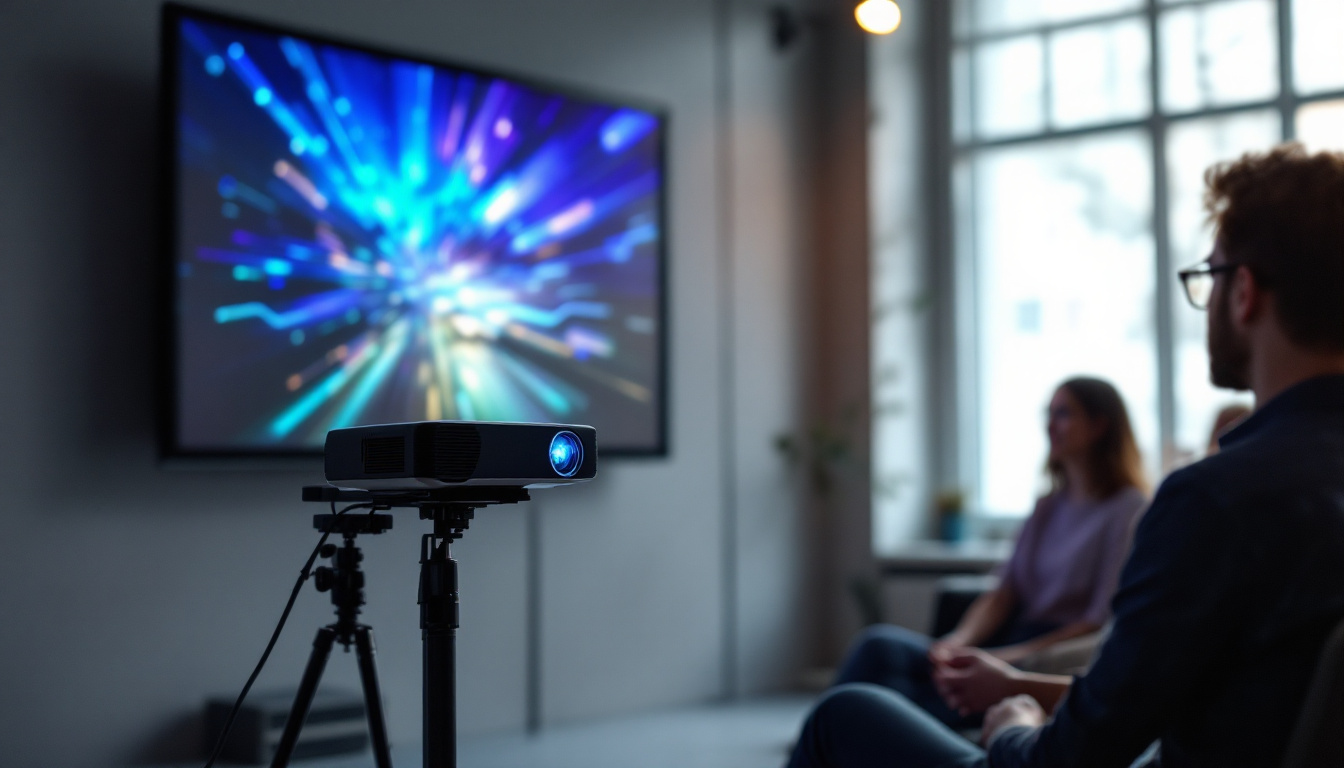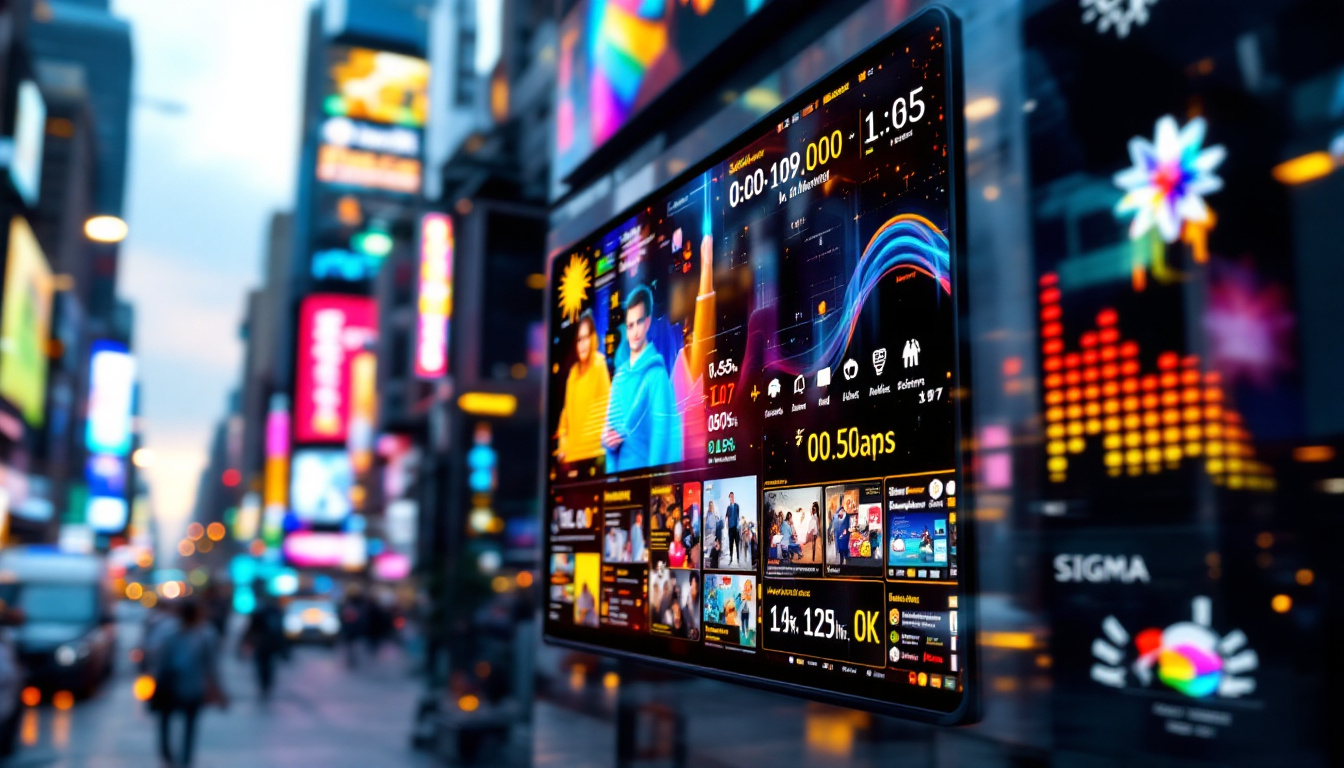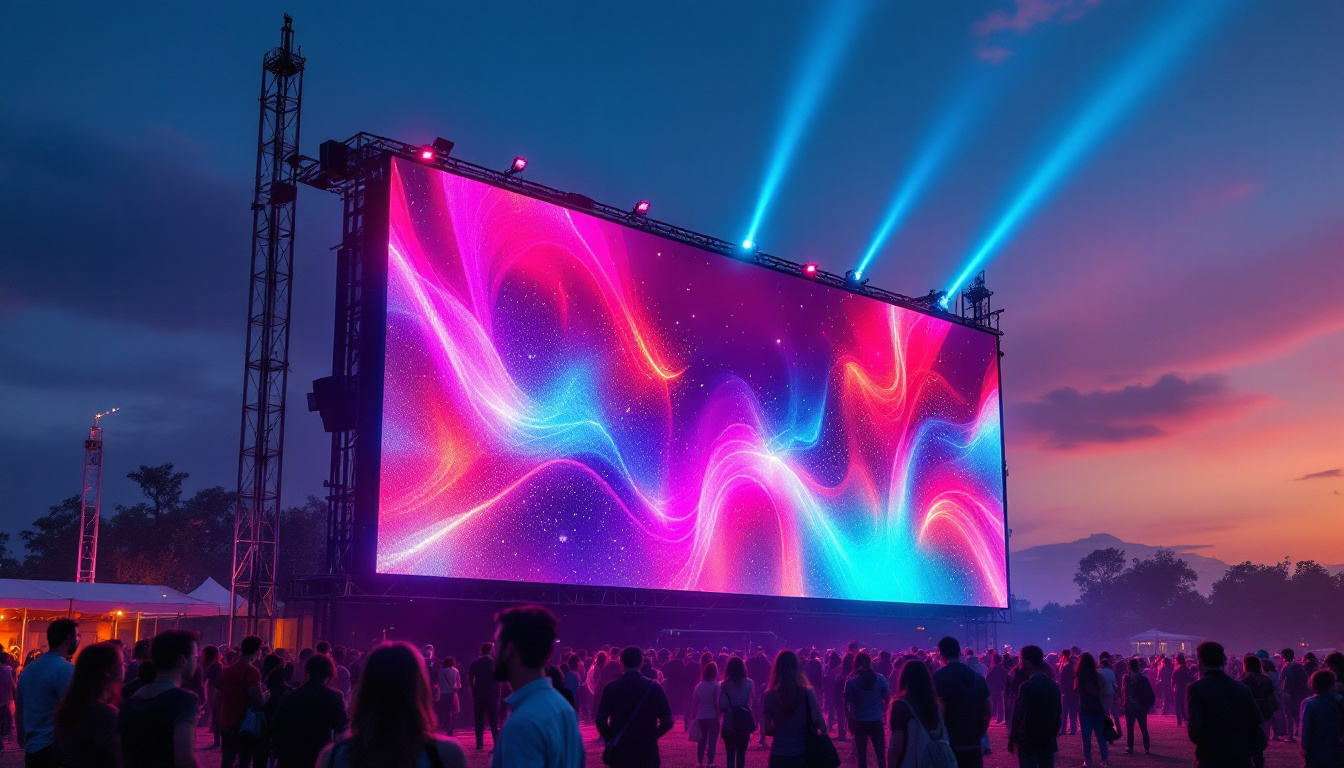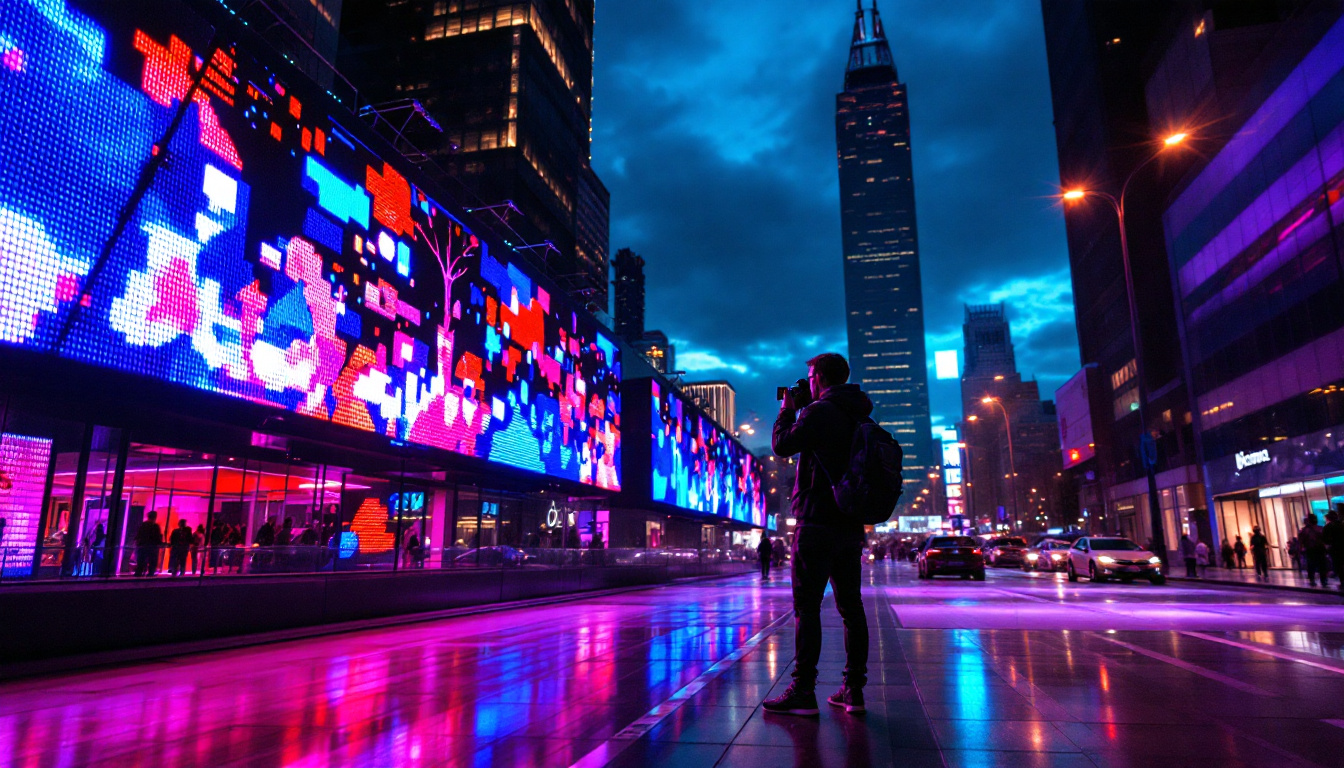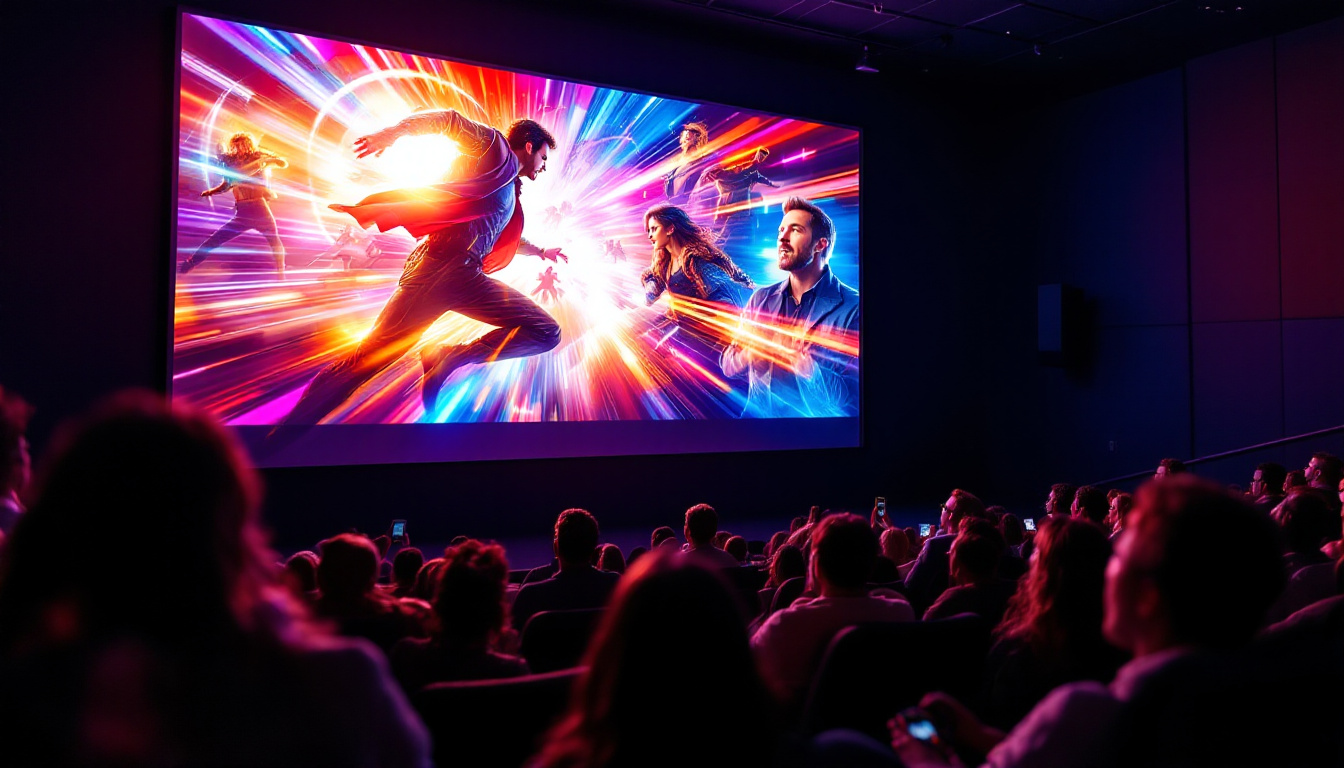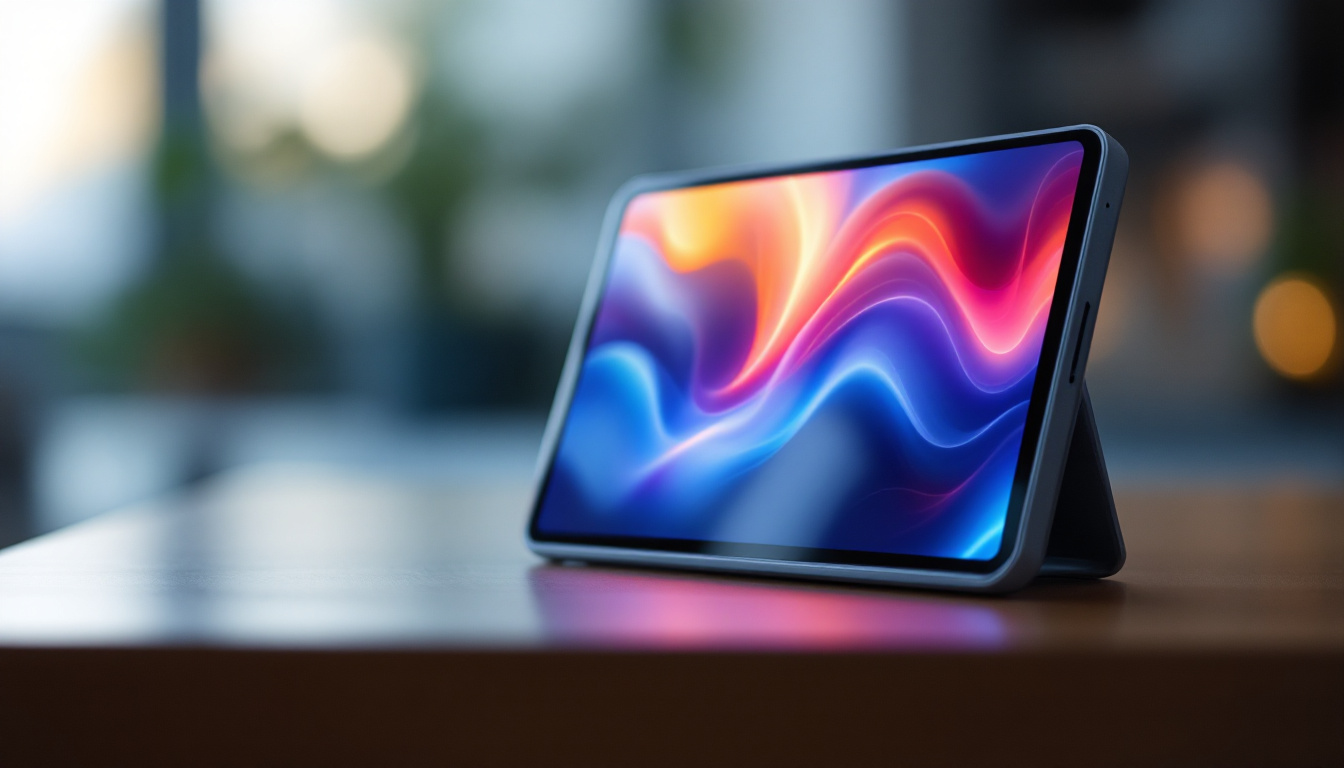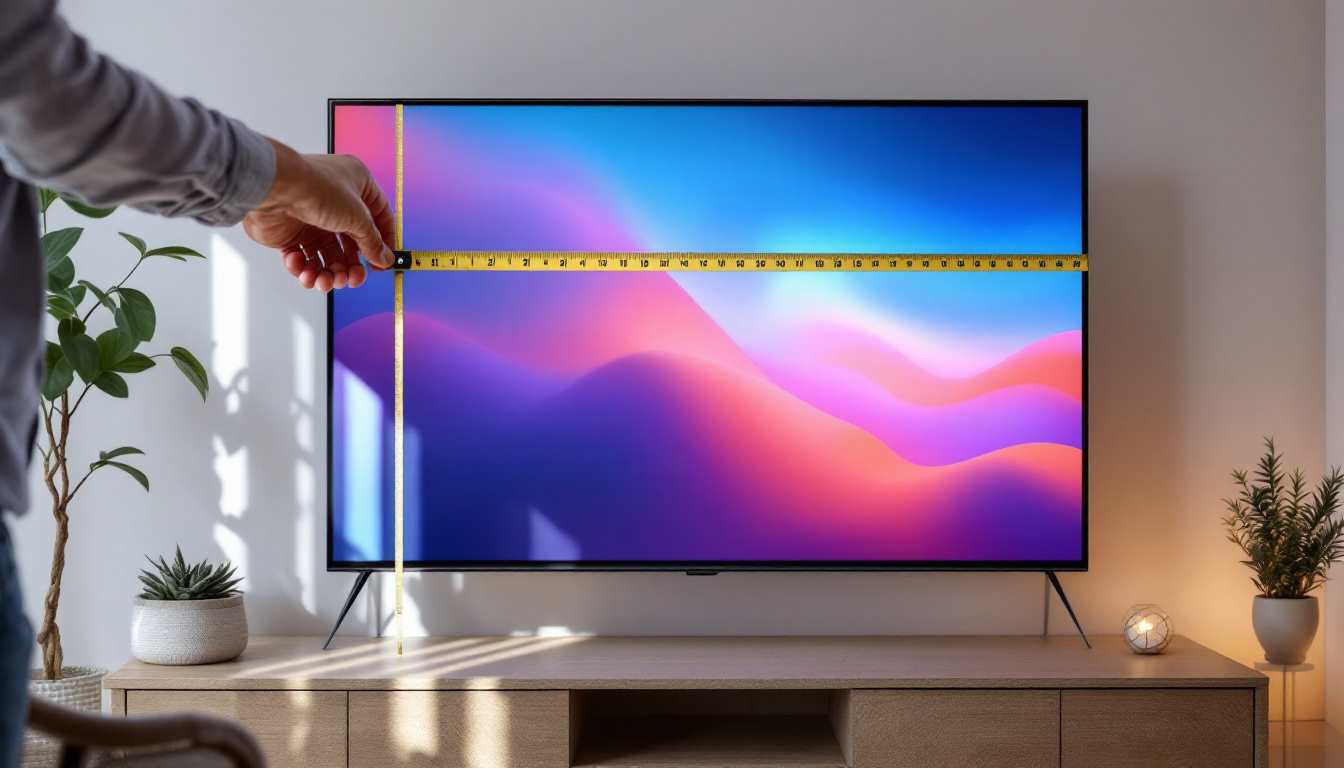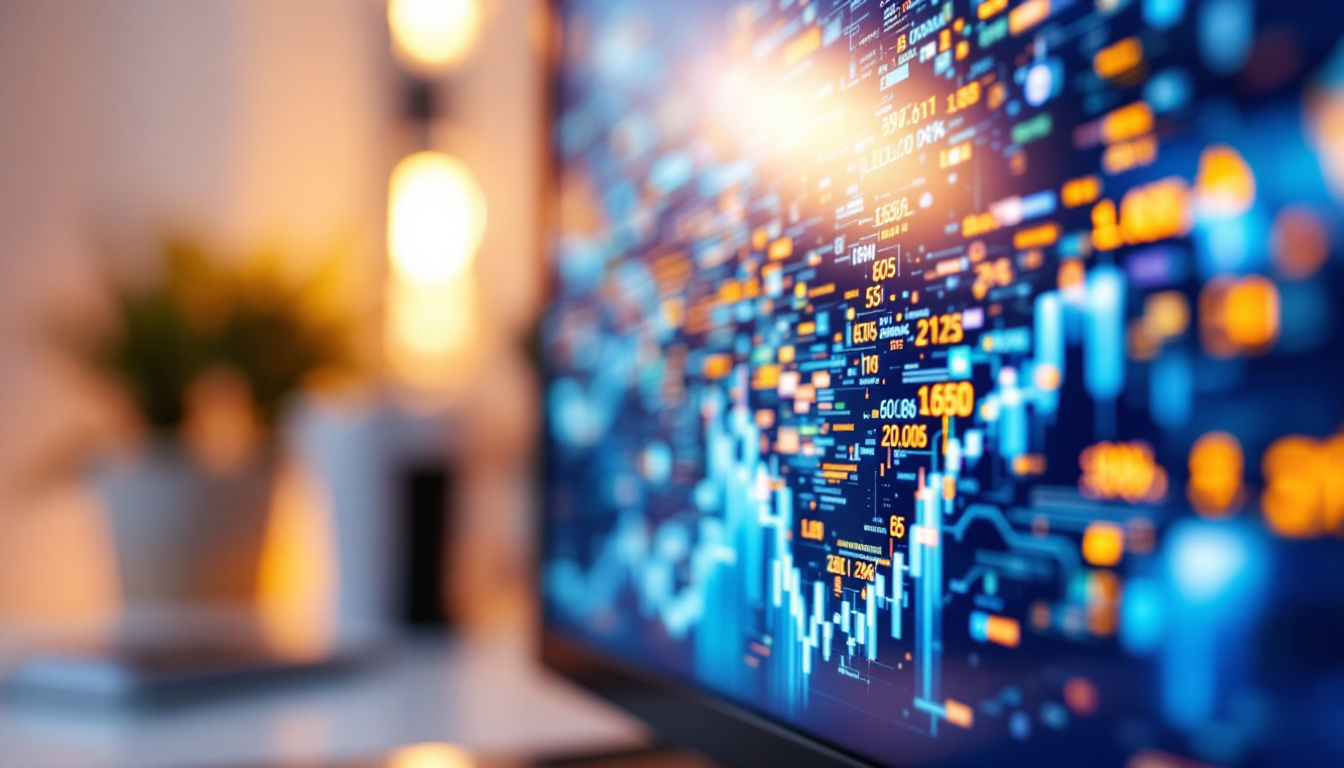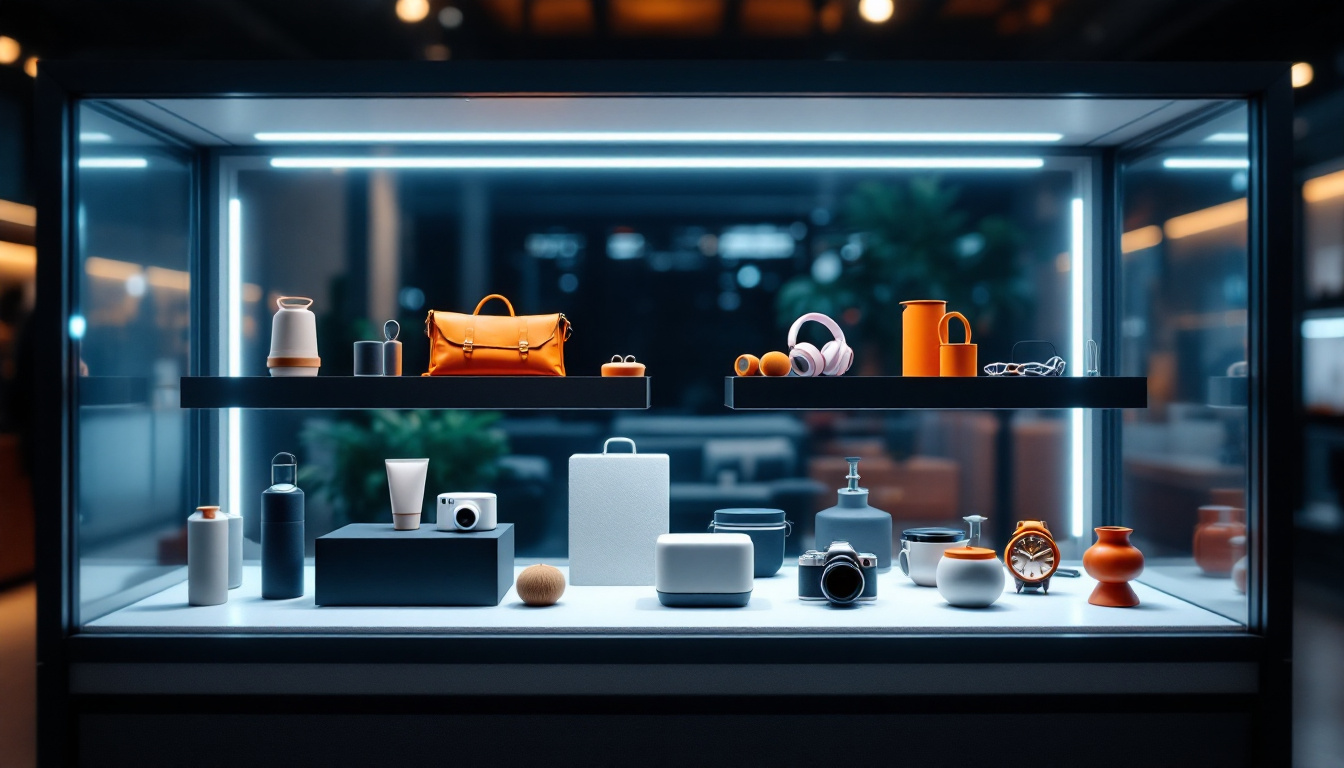In the ever-evolving landscape of technology, LED displays have emerged as a transformative force across various industries. From advertising to entertainment, these vibrant screens have redefined how information is conveyed and experienced. This article delves into the intricacies of LED displays, their applications, benefits, and the future they promise.
Understanding LED Technology
LED, or Light Emitting Diode, technology has revolutionized the way we think about lighting and displays. Unlike traditional lighting sources, LEDs are small, efficient, and capable of producing a wide range of colors. Their unique properties make them ideal for various applications, particularly in display technology.
The Basics of LED Displays
LED displays consist of numerous tiny diodes that emit light when an electric current passes through them. These diodes are arranged in a grid format, allowing for the creation of images and videos. The brightness and clarity of LED displays make them suitable for both indoor and outdoor environments.
One of the key advantages of LED technology is its energy efficiency. Compared to traditional display technologies, such as LCD or CRT, LED displays consume significantly less power, making them a more sustainable choice. This efficiency not only reduces energy costs but also contributes to a lower carbon footprint. Furthermore, the longevity of LEDs—often lasting up to 50,000 hours or more—means fewer replacements and less waste, which is an important consideration in today’s environmentally conscious market.
Types of LED Displays
LED displays come in various forms, each tailored for specific uses. The most common types include:
- Direct View LED Displays: These displays are made up of individual LED modules that create a seamless image. They are often used for large outdoor billboards and indoor video walls.
- LED Backlit Displays: These are traditional LCD screens enhanced with LED backlighting, offering improved brightness and color accuracy.
- Organic LED (OLED) Displays: Utilizing organic compounds, OLED displays provide superior contrast and color reproduction, making them popular in high-end televisions and smartphones.
In addition to these common types, there are also specialized LED displays designed for niche applications. For instance, Transparent LED Displays are gaining traction in retail environments, allowing for captivating visual displays while maintaining visibility through the glass. Similarly, Flexible LED Displays offer the ability to bend and shape the screen, opening up creative possibilities for architectural designs and artistic installations. These advancements highlight the versatility of LED technology and its potential to transform not just how we view content, but also how we interact with our environments.
Moreover, the integration of smart technology with LED displays is paving the way for interactive experiences. Smart LED displays can connect to the internet, enabling features like real-time data updates, social media integration, and even audience engagement through touch or motion sensors. This evolution towards smart displays is particularly evident in advertising and public information systems, where dynamic content can be tailored to specific audiences or events, enhancing the overall effectiveness of communication strategies.
Applications of LED Displays
The versatility of LED displays has led to their widespread adoption across various sectors. Here are some of the most prominent applications:
Advertising and Marketing
LED displays have become a staple in advertising due to their eye-catching visuals and dynamic content capabilities. Billboards, storefront displays, and transit advertising have all embraced this technology to engage audiences effectively. The ability to change content in real-time allows businesses to tailor their messages based on time, location, and audience demographics.
Moreover, the brightness and clarity of LED displays ensure that advertisements are visible even in direct sunlight, making them ideal for outdoor applications. This adaptability has made them a preferred choice for brands looking to maximize their visibility and impact. Additionally, the integration of interactive features, such as touch screens or QR codes, allows consumers to engage directly with the content, further enhancing the effectiveness of marketing campaigns.
Entertainment and Events
In the realm of entertainment, LED displays play a crucial role in enhancing the audience experience. Concerts, festivals, and sporting events utilize large LED screens to broadcast live performances, highlight key moments, and engage fans. The immersive visuals created by these displays contribute to a more engaging atmosphere, making events memorable.
Additionally, LED technology is increasingly used in theaters and cinemas, where it provides vibrant colors and sharp images. This has led to a shift in how films are produced and presented, with many filmmakers opting for LED screens to create stunning visual effects. The flexibility of LED displays also allows for creative staging and set designs, enabling directors to craft unique environments that can change dynamically throughout a performance.
Transportation and Public Information
LED displays are widely used in transportation systems to provide real-time information to passengers. Train stations, airports, and bus terminals utilize LED screens to display arrival and departure times, ensuring that travelers are well-informed. The clarity and visibility of these displays are crucial for maintaining efficiency and safety in public transport.
Furthermore, LED displays are often employed in traffic management systems to relay important information to drivers, such as road conditions, speed limits, and detours. This application not only enhances safety but also contributes to smoother traffic flow. In addition to these functions, LED displays can also serve as emergency alert systems, providing critical information during unforeseen events, such as accidents or severe weather conditions, thereby playing a vital role in public safety and crisis management.
Benefits of LED Displays
The advantages of LED displays extend beyond their vibrant visuals. Here are some key benefits that make them a popular choice for various applications:
Energy Efficiency
As previously mentioned, LED displays are highly energy-efficient. They consume significantly less power than traditional display technologies, which translates to lower operational costs. This efficiency is particularly beneficial for businesses that operate large displays continuously, such as outdoor billboards or digital signage in retail environments. Moreover, the reduced energy consumption contributes to a smaller carbon footprint, aligning with the growing emphasis on sustainability in corporate practices. Many organizations are now prioritizing energy-efficient solutions as part of their commitment to environmental responsibility, and LED displays fit perfectly into this narrative.
Longevity and Durability
LED displays are known for their long lifespan, often lasting tens of thousands of hours before needing replacement. This durability makes them a cost-effective investment for businesses and organizations. Additionally, LED technology is more resistant to shock and vibration, making it suitable for various environments, including outdoor settings where exposure to the elements is a concern. The robust nature of LED displays means they can withstand harsh weather conditions, from heavy rain to extreme temperatures, ensuring consistent performance over time. This resilience not only reduces maintenance costs but also minimizes downtime, allowing businesses to maintain a steady stream of communication with their audience.
High-Quality Visuals
One of the standout features of LED displays is their ability to produce high-quality visuals. With vibrant colors, deep blacks, and excellent contrast ratios, LED displays offer an immersive viewing experience. This quality is particularly important in applications such as advertising and entertainment, where capturing the audience’s attention is paramount. Furthermore, the brightness of LED displays allows them to be clearly visible even in direct sunlight, making them ideal for outdoor advertising. The ability to display dynamic content, including videos and animations, enhances engagement and can lead to higher conversion rates for businesses. As technology continues to evolve, the integration of advanced features such as 4K resolution and HDR (High Dynamic Range) capabilities is further elevating the visual performance of LED displays, making them an even more attractive option for a variety of uses.
The Future of LED Displays
The future of LED display technology looks promising, with continuous advancements on the horizon. As technology evolves, several trends are emerging that are likely to shape the industry:
Miniaturization and Flexibility
One of the most exciting trends in LED technology is the miniaturization of components. Smaller LEDs enable the creation of flexible displays that can be shaped and configured in various ways. This opens up new possibilities for creative applications, such as curved screens and interactive installations.
Flexible LED displays can be used in a range of settings, from retail environments to art installations, allowing designers to push the boundaries of traditional display formats. This adaptability is set to redefine how visual content is presented and experienced.
Integration with Smart Technology
As the world becomes increasingly interconnected, the integration of LED displays with smart technology is gaining momentum. Smart LED displays can connect to the internet, allowing for real-time content updates and data-driven advertising. This capability enables businesses to tailor their messaging based on analytics and user behavior, enhancing engagement and effectiveness.
Moreover, the integration of LED displays with augmented reality (AR) and virtual reality (VR) technologies promises to create immersive experiences that blur the lines between the digital and physical worlds. This convergence of technologies will likely lead to innovative applications in entertainment, education, and beyond.
Sustainability Initiatives
With growing awareness of environmental issues, sustainability is becoming a key focus in the LED display industry. Manufacturers are exploring eco-friendly materials and production processes to minimize their environmental impact. Additionally, the energy efficiency of LED technology aligns with global efforts to reduce carbon emissions and promote sustainable practices.
As consumers increasingly prioritize sustainability, businesses that adopt eco-friendly LED displays may gain a competitive edge in the market. This shift towards greener technology is likely to shape the future of the industry.
Conclusion
LED displays have undoubtedly transformed the way information is presented and consumed across various sectors. Their vibrant visuals, energy efficiency, and adaptability make them an invaluable tool for businesses and organizations. As technology continues to advance, the potential applications and benefits of LED displays are set to expand even further.
From advertising and entertainment to transportation and public information, LED displays are poised to play a pivotal role in shaping the future of communication. Embracing this technology not only enhances visual experiences but also contributes to a more sustainable and efficient world.
In conclusion, the off-the-wall application of LED displays is just beginning to unfold, and the possibilities are as limitless as the creativity of those who wield them. As industries continue to innovate, LED technology will remain at the forefront, illuminating the path to a brighter future.
Illuminate Your World with LumenMatrix
As you’ve seen, LED displays are not just a technological innovation; they are a canvas for creativity and a beacon for business growth. LumenMatrix stands at the forefront of this vibrant future, offering a comprehensive suite of LED display solutions tailored to your needs. Whether you’re looking to enhance brand visibility, captivate audiences, or create immersive environments, our Indoor and Outdoor LED Wall Displays, Vehicle LED Displays, and more are designed to revolutionize visual communication. Ready to transform your space with unparalleled clarity and impact? Check out LumenMatrix LED Display Solutions and step into a brighter, more engaging future.

